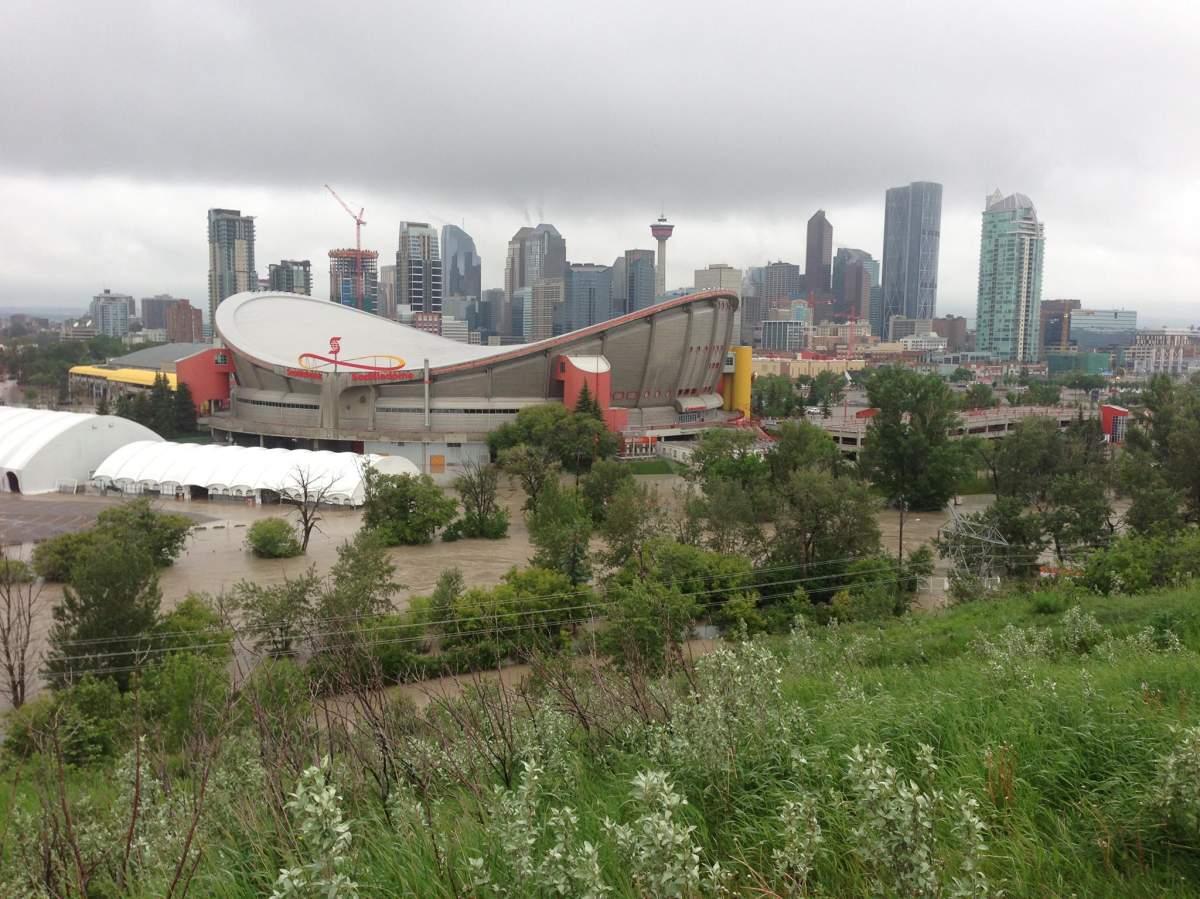Alberta’s snowpack may be deep but officials say that doesn’t mean the recurrence of heavy flooding that devastated the southern part of the province nearly five years ago.

Frank Frigo, leader of watershed analysis with the City of Calgary, says the snowpack from a particularly long winter was about 30 per cent higher than normal. But that doesn’t immediately translate into a spring flood.
“In terms of precipitation, we see that we have weak La Nina conditions in the Pacific Ocean that led to that high snowpack,” Frigo said at a city flood briefing on Monday. “The usual pattern following a La Nina is a drier than average summer season.”
With warmer weather moving in, the snowmelt has been going down at a consistent rate between 50 and 100 millimetres a day.
Frigo said snowmelt only accounts for about 10 to 15 per cent of runoff at peak and there would have to be a major weather event to increase the flooding risk.

Get breaking National news
Floods in 2013 forced 100,000 people from their homes, primarily in Calgary and High River, and caused an estimated $6 billion in damage.
The high water damaged 14,000 homes, 80 schools and 10 health facilities and forced the closure of nearly 1,000 kilometres of highway.
Frigo said flood mitigation projects are ongoing but work still needs to be done along the Bow River, especially inside Calgary.
If there were a repeat of 2013, the city would still be flooded but it would cause less damage, he said.
“Investments have been made both provincially and locally by the city and have reduced our estimated damage exposure by about a third,” he said. “Where the 2013 event drove economic damages in the net order of around $2 billion, it would be reduced by at least a third.”

Comments